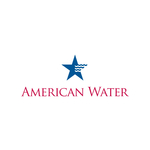Sign up for daily news updates from CleanTechnica on email. Or follow us on Google News!
The University of Pennsylvania is more than just another college. A member of the vaunted Ivy League, it also has an extensive healthcare component. Together, its educational and healthcare facilities consume an enormous amount of electricity — around 300 MW, or about a third of what an average size nuclear power plant produces. The only other Ivy League school that has made a major commitment to solar power is Columbia, which gets 100% of its electricity from renewable sources.
The solar electricity is generated at two large solar farms — Great Cove I and Great Cove II — located on 1,600 acres in Fulton and Franklin counties in central Pennsylvania, about halfway between Philadelphia and Pittsburgh. Combined, they consist of 485,000 solar panels with a capacity of 220 MW. That makes the two installations the largest solar project in the state. Both became operational in December, 2023.
The University of Pennsylvania will purchase the entire output of both solar farms thanks to a power purchase agreement signed in February of 2020 with Community Energy, which has since been acquired by AES Corporation, a global clean energy company based in Virginia.
The university pays AES for electricity produced by the project and receives solar renewable energy credits in return. AES then sells the generated solar power to PJM, a regional transmission organization that coordinates the transfer of wholesale electricity in all or parts of 13 states. The university also receives credits based on those sales.
Installation of the solar panels took place in 2023. The renewable energy from the two Great Cove installations will move the university and health system facilities in the Philadelphia area a big step closer to their goal of being 100% carbon neutral by 2042. Output of the solar farms was at 80% of capacity at the end of December and reached 100% by the end of February.
“I couldn’t be prouder that we’ve made such rapid, milestone progress toward carbon neutrality, not only for Penn but for the city of Philadelphia,” Interim President J. Larry Jameson said at a ceremonial ribbon cutting celebrating the PPA and the solar facilities operation during Energy Week. He added that with the University’s strategic framework — In Principle and Practice — “’We’re taking on the greatest challenges of our time, and at the top of that list is climate change and sustainability.”
The partnership with AES “has been essential in meeting Penn’s goal to accelerate its adoption of renewable energy, and doing it in a way that serves the mission of our institution,” said Anne Papageorge, senior vice president of facilities and real estate services for the University of Pennsylvania at the ribbon cutting ceremony, which was held at the Kleinman Center for Energy Policy in the Stuart Weitzman School of Design. “This agreement not only provides competitive pricing on electricity but also allows the University of Pennsylvania to continue to demonstrate strong leadership on climate action.”
Walter Crenshaw, senior director of origination at AES, said his company “is one of the largest owner-operators and developers of renewable energy facilities in the country, but none of that really works unless we have a customer who is committed and shows leadership, like Penn.”
 Chip in a few dollars a month to help support independent cleantech coverage that helps to accelerate the cleantech revolution!
Chip in a few dollars a month to help support independent cleantech coverage that helps to accelerate the cleantech revolution!
Solar Power Today Started Many Years Ago
In 2007, former Penn president Amy Gutmann signed the American College and University Presidents’ Climate Commitment to develop a plan for climate neutrality. The University then formed the Environmental Sustainability Advisory Committee to make recommendations for accomplishing carbon reduction goals. Penn released its first Climate Action Plan in 2009 and is now operating under the Climate and Sustainability Action Plan 3.0, which laid out the pledge for carbon neutrality by 2042.
William Braham, professor of architecture in the Weitzman School of Design and co-chair of the utilities and operations subcommittee, said the committee realized investing in buildings alone to lower greenhouse gas emissions was not going to be enough. They needed to look at their electricity supply as well. Penn had been purchasing wind energy from a farm in Pennsylvania, but ESAC examined what it would take to expand Penn’s portfolio of renewable energy, Braham said.
“The University gets a lot of credit, because when we started to do it, it was mostly for climate reasons — We made this pledge; we have to keep up to it,” he said. But a curious thing happened when the committee dug into the numbers. It soon became apparent the University could save money over time as the cost of solar development decreased. The university considered getting 50% of its electricity from solar but later increased the amount to 70%, said Faramarz Vakili, executive director of operations and maintenance.
In 2019, after receiving plans from 30 developers, Ben Suplick, the director of engineering and energy planning for the university and co-chair of the utilities and operations sub-committee, said the choices were narrowed down to three companies. Further due diligence identified Community Energy, now AES, as the best choice. “The main drivers were location, cost, and our confidence in the project being able to be built,” Suplick said.
Pre-panel construction occurred from April 2022 to May 2023, ahead of solar panel installation from last May to December, and then the substation interconnection and testing occurred in November. AES installed more than 50 miles of medium voltage cabling underground to connect all the modules and units to the substation. He credited AES for its creative and flexible approach. The company changed its methodology and completed the process in a different order than normal because of supply chain complexities.
“We went through a pandemic during this period, which changed many things — supply chain, costs — and so what I’m most proud of is that AES’ team and our team continued to work through all of those challenges,” Papageorge said.. “We actually, to the month, finished the project within the schedule of the contract.”
A Solar Farm Is Farming
The land that is now home to Great Cove I and II was previously used for dairy and crop production. It was leased by AES from owners who were ready to retire from agriculture but wanted to retain ownership of their land. “The farmer just likes to create something, whether it’s something that grows out of the ground or something that shines from the sky, and there’s excitement in that,” said Glenn Dice Jr., who owns some of the land that is now part of the Great Cove facility. “You can plan for 20 to 50 years with this. That’s significant.” Kenneth Lee Glazier, another Great Cove Solar landowner, commented with a laugh, “Makes you sleep at night, to keep your bills paid.”
The solar installations will provide educational opportunities for three summer interns and two graduate students. AES will also provide funding to the university for education and training associated with various aspects of renewable energy and sustainability. That’s already happening. Hannah Winn, a master’s degree candidate in earth and environmental studies, has visited Great Cove II three times since last spring for her research into how the construction of solar arrays impacts soil health and whether the soil may be sequestering carbon.
Winn explained that she took soil samples from four parcels, which she chose based on erosion concerns. She sent the samples to Cornell Soil Health Laboratory for the sake of consistency, since that’s where AES sent the baseline soil samples taken prior to construction.
Winn is still finishing research for her degree, but has already developed seven best management practices, some of which AES is already implementing. They include re-introduction of native vegetation, soil erosion and sedimentation control, grazing, agrivoltaics systems, soil health restoration practices, solar tracking systems, and photovoltaic array design for agriculture opportunities.
“It’s not very often that you get to work hand-in-hand with your PPA off-taker and be able to perform studies that are going to help us with insuring that the dirt that we’re building upon is safe and clean,” Riley Shea, senior project manager at AES. “To be able to enhance that for future work is also something that we’re extremely lucky to have in working with Penn.”
The Takeaway
What could be more appropriate than an educational institution demonstrating to its students how to create a sustainable environment? The CEO of Aramco may think fossil fuels will rule the roost forever, but he is letting his wallet speak for him rather than his brain.
The solar power arrangement the university made will keep 130,000 metric tons of carbon dioxide out of the air every year for the next 25+ years and lower the university’s carbon footprint by 26% as well. By doing this, the University of Pennsylvania is not only meeting its carbon reduction goals, it is educating its students and its employees about why they should do the same.
Now we need other colleges and universities to do so as well. The best education is one that not only talks about how to create a more just and sustainable society but also teaches how to accomplish those lofty goals. Leges sine Moribus vanae!
Have a tip for CleanTechnica? Want to advertise? Want to suggest a guest for our CleanTech Talk podcast? Contact us here.
Latest CleanTechnica TV Video
CleanTechnica uses affiliate links. See our policy here.





